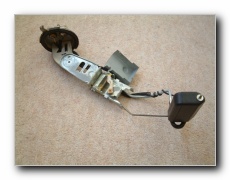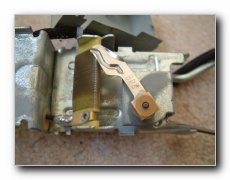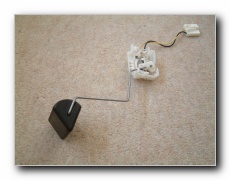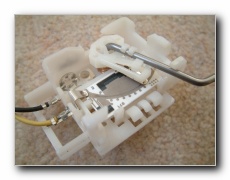
Fuel Sender Info
Resolving Fuel Gauge Issues With The S2000 Cluster.
Introduction
Reading the level of fuel in a vehicle isn't an easy job - as most driver's will know, fuel gauges tend to have their have their own personality. It has to respond fast enough to show a trend but dampened in such a way that the movement of fuel in the tank when on the move will have as little an impact as possible.
Conventional fuel gauges consist a coil and magnet arrangement, filled with damper oil - very simple but works pretty well most of the time. To reproduce the same effect the damper oil has on the mechanical gauge is not an easy task in software - something the engineers have constantly tried to improve on throughout the life of the S2000 cluster.
The majority of people wanting to retro fit the S2000 cluster have vehicles that use a different type of fuel sender to the one the S2000 uses. The two main types are detailed below.
Wire-wound Sender
This type of sensor is commonly found in Honda vehicles up to the age of around 2000, although this does vary.
The early sender consists of a a float and arm attached to a stainless steel wiper that runs along a plastic former, on which a coil of resistance wire is wrapped around. This forms a very crude variable resistor, which is fine when using a stock fuel gauge.
However, over time the coil of wire becomes worn and the output from the sensor can become very noisy - this can even be affected by the type of fuel you use, and what level you normally fill the tank to - the sliding wiper is effectively lubricated by the fuel, but when the level drops and it is exposed to air the stability of the connection to the resistance wire can be badly affected.
Thick-Film Sender
This type is found in most Honda vehicles from 2000 onwards as a general rule.
This is streets ahead of the earlier type, and more or less every vehicle manufacturer is using this type. Instead of the coil of resistance wire it uses a thick-film resistor and a reliable sliding contact. This type of sender is very accurate, and even after many thousands of miles of bobbing around in the tank is still as accurate as the day it was fitted.
So why not just fit a modern style of sender along with the S2000 cluster? Because every fuel sender is profiled to the tank it is to be used in. It also has to be modified substantially which is out of the scope of most DIY'ers who want to fit the cluster.
How it Affects the Conversion
When using the S2000 cluster with an elderly wire-wound fuel level sender you may find that the gauge is erratic when getting near the bottom of the tank -this is due to the somewhat crude construction of the earlier senders.
Depending on which car you have, the minimum and maximum positions on the gauge do not relate to the tank. Later 2000 style clusters are a lot worse, and the 2004 clusters are a complete disaster - minimum and maximum does not relate in any shape or form to the position of the float in the tank, and that combined with noisy signal kills any chance of an accurate fuel reading.
How to solve the problem? Make the fuel gauge reprogrammable - the only realistic solution!
To Sum Up:
- The S2000 uses a modern fuel level sender unit which is tailored to the fuel tank. This is worlds apart from the early type fitted to most vehicles.
- The gauge cluster (and to some extent the sender also) has been refined by Honda throughout the life of S2000. Not all clusters are the same.
- There is a wide variance in the characteristics of the older style stock sensors - most people who want to do the cluster conversion have these types of sensors in their cars.
- Older sensors get very noisy as they age.
- Resistance of the wiring to the sender also has a noticeable impact.
The Solution
With my conversion you can program the minimum and maximum positions of the gauge relative to your own fuel sender - this gets round the problem of the tolerances in vehicle wiring and the sensor itself. You can also adjust it to your own particular requirements - some people like to have the fuel gauge show empty when the tank is dry and others like to have a few litres left.




